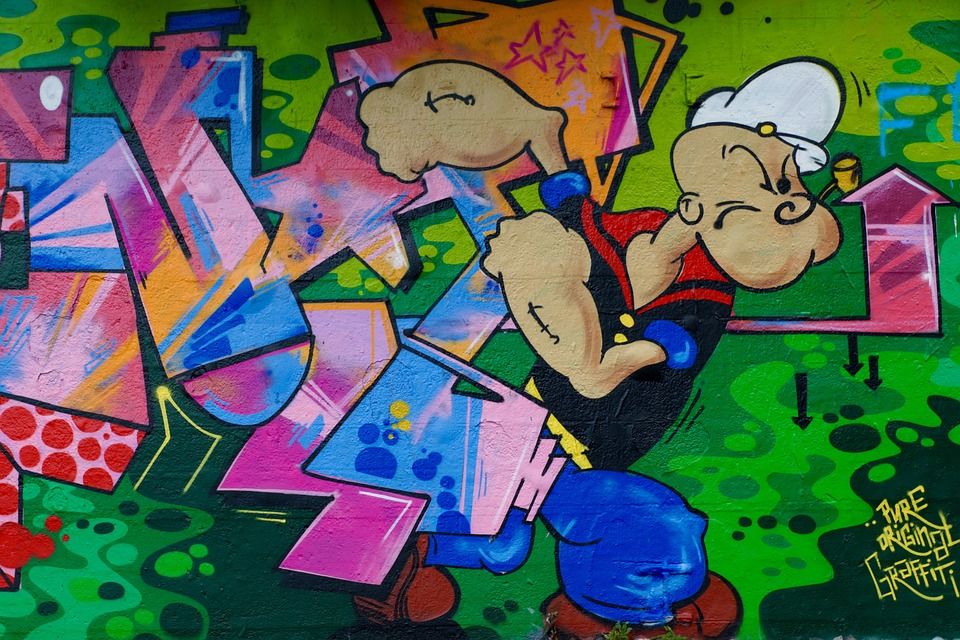Popeye, otherwise known as Popeye the Sailor, is an iconic cartoon character that first appeared on the Thimble Theatre comic strip published by King Features on January 17, 1929. However, the character’s popularity skyrocketed when he appeared in a series of theatrical cartoon shorts aptly called “Popeye the Sailor,” created by Max Fleischer and produced by Paramount Pictures in the 1930s. To understand the history of how the spinach-eating sailor transformed from a simple comic strip character to a cartoon icon, here is an introduction to Popeye.
Conceptualization and Production
The Popeye character originated from a series of newspaper comics strips created by E.C. Segar titled Thimble Theatre, which was published by King Features from 1919 to 1938. During the Great Depression, Thimble Theatre became quite popular among newspaper readers, as reading the adventures of Popeye made them forget or escape their financial problems. Wanting to capitalize on the sailor character’s popularity, King Features inked a deal with animation company Fleischer Studios to turn the Popeye comic strips into cartoon shorts. The first cartoon produced by Fleischer Studios was released in 1933.
Fleischer Studio then started to incorporate other Thimble Theatre characters in their cartoon shorts, and some of these characters are Swee’ Pea, Poopdeck Pappy, and Wimpy. The unique aspects that were added by Fleischer to the Popeye character are his family, which is primarily composed of his nephews Peepeye, Pipeye, Poopeye, and Pupeye, and the unique ability to gain super strength by eating spinach. However, the spinach power of Popeye has already been utilized by Segar in several comic strips, but it is Fleischer Studios that added it as a staple to the character.
Eventually, the cartoon became even more popular than the comic strips where the character came from, and children soon believed that spinach truly gives people super strength. Interestingly, the sales for spinach during the early years of Popeye’s theatrical appearances have increased by 33%.
Characters
The protagonist of the show is the titular character Popeye, a sailor with a thin physique that always gets bullied by his rival Bluto, a muscular man who is trying to win the heart of Olive Oyl, Popeye’s love interest. The rivalry between Popeye and Bluto is a recurring plot element present in almost all shorts.
There are also other minor characters that appear in the show. J. Wellington Wimpy is an intelligent man who serves as Popeye’s best friend, but he would sometimes have cowardly tendencies, hence the reason why his nickname is Wimpy. Eugene the Jeep is a mysterious animal that was a gift by Olive Oyl to Popeye, and he possesses supernatural powers like teleportation and the ability to walk through solid walls. Swee’ Pea is a small child that is taken care of by Olive Oyl, although it is not clear in the cartoon shorts if he is the son of Olive. In the original comic strip, it was Popeye who adopted Swee’ Pea after being delivered in a box to the sailor by mistake.
Premiere and Broadcast
The Popeye character debuted in Popeye the Sailor, a short film released in 1933 that serves as a spinoff to the Betty Boop franchise. In the film, Betty Boop made only a cameo appearance, as Popeyes served as the main focus of the short’s story. Several animated shorts continued to be released for Popeye the Sailor in the 1930s. Because of the enforcement of the Hays Code (Motion Picture Production Code) in 1934, which implemented censorship to movies, Popeye became more popular than Betty Boop, as the latter is forced to change her image to adhere to the guidelines.
Fleischer Studios was able to produce 108 Popeye the Sailor cartoons, and 105 of those shorts are in black and white. The partnership between distributor Paramount Pictures and Fleischer Studios then turned sour around 1939, which is also the year when Max and Dave Fleischer, the brothers who founded the studio, were not speaking to each anymore due to differences on the creative process of their intellectual properties as well as how the business should be run.
Paramount Pictures was able to seize control of Fleischer Studios in 1941, as the Fleischer brothers were unable to pay the money they owed to Paramount for producing several movies and for the moving of their company to Florida. After acquiring the studio, Paramount fired the Fleischer brothers, reorganized the company, and renamed it to “Famous Studios.” The production for the Popeye the Sailor shorts was then revived.
Famous Studios produced 125 Popeye the Sailor shorts, although some of those have “Paramount Cartoon Studios” attached to them. Paramount Cartoon Studios was the name given by Paramount when they renamed Famous Studios once again in 1956. The last short produced by the studio was Spooky Swabs, which was released in 1957.
In 1955, Paramount began selling its library of cartoons and shorts to television networks. Interstate Television expressed interest in buying the Popeye cartoons, but King Features didn’t allow their intellectual property to be sold at a low price. Interstate, Paramount, and King Features then began negotiating a deal, but it was another company called Associated Artists Productions (a.a.p.) that was successful in buying the TV rights for the cartoons. Associated Artists Productions created their own openings for the Popeye cartoons that they have, as Paramount asked them to remove the Paramount logo that is shown at the beginning of the shorts. However, Paramount’s imprints, as well as the copyright tags of Fleischer Studio and Famous Studio, we still present in most of the shorts distributed by a.a.p.
In 1958, a.a.p was sold to production company United Artists, and United Artists was absorbed by Metro-Goldwyn-Mayer in 1981. Cartoon Network was then created in 1992, and the TV station was able to get syndication rights for most of Metro-Goldwyn-Mayer’s cartoon library, including Popeye the Sailor. It was in Cartoon Network that Popeye received newfound popularity amongst the new generation of children in the 90s.


